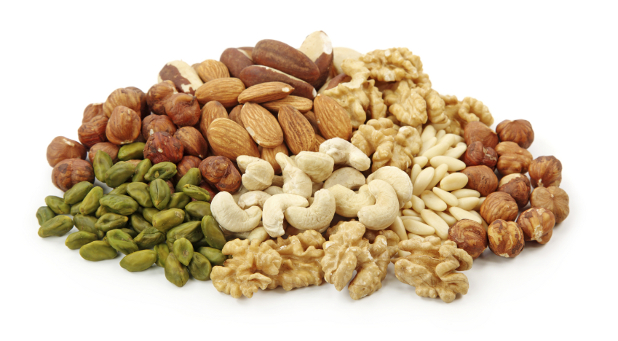God skillfully designed your body as an incredible, living creation that will operate at peak efficiency and health when it is supplied with proper nutrition. There are many of reasons why Americans are obese. I want to take a look at the powerful nutritional foundation that will help you to discover a healthier, happier, more attractive you. And once we’ve settled on the foundations of good food to eat, I’ll provide you in the next section with a specific diet to follow to reverse inflammation’s disruption in your body once and for all.
Choosing the Right Carbohydrates
Certain carbohydrates are critical for good health. When combined with the correct portions of fats and proteins, good carbs give you energy, calm your mood, keep you full and satisfied by turning off hunger and assist in weight loss. They also help you to enjoy meals and snacks, enable you to handle stress better, allow you to sleep more soundly, improve your bowel function, and give you an overall feeling of well-being.
However, as with so many things in the land of excess, most Americans have fallen in love with the wrong kind of carbs. They see their waistlines getting wider and wider as a result of eating too much sugar, starch, bread and pasta, and they think the answer is to swear off all carbohydrates. The problem is, high-protein diets are often hard to maintain for long, and in some cases they have damaging effects on health. The answer isn’t a no-carb diet but one rich in the right kinds of carbohydrates.
The National Institutes of Health recommends that 45 to 65 percent of daily energy intake for adults come from carbohydrates, with 20 to 35 percent of energy coming from fats and only 10 to 35 percent from proteins. The American Diabetes Association also recommends 45 to 60 grams of carbohydrates in each meal, preferably from healthy whole grains.
I believe this is too many carbohydrates and too much grain.
I believe excessive carbohydrates and grains—especially wheat and corn products—are one of the main reasons for our obesity epidemic. I typically recommend about 50 to 55 percent of daily calories come from low-glycemic carbohydrates, 15 to 20 percent from plant and lean animal proteins, and 25 to 30 percent from healthy fats.
Because wheat and corn can trigger exaggerated blood sugar responses, I have my patients give up all wheat and corn products for a season or until they reduce their belly or body fat. Even if breads at the supermarket are called whole-grain breads, they still contain amylopectin A, which usually spikes blood sugar, programming the body for fat storage and weight gain. Therefore if my patients request bread, I recommend that they have small amounts of millet bread in the morning or at lunch. It contains no wheat. However, if weight loss stalls, I have my patients stop eating millet bread. Once a person reaches his goal waist measurement or weight, if he can practice moderation, I have him add back small servings of wheat and corn for breakfast or lunch, but not dinner.
The Tortoise and the Hare
So, how can a person know which are the right carbs to choose? Many people are familiar with the old story about the tortoise and the hare. The hare races ahead but fails to reach the finish line, while the slow but steady tortoise eventually passes him and wins the race. When it comes to how your body processes carbohydrates, the race that takes place within you is reminiscent of this classic fable. I’ve used these familiar characters to identify two main types of carbohydrates:
- low-glycemic “tortoise carbs” and high-glycemic “hare carbs.”
Unfortunately most of the carbohydrates overweight and obese people consume are high-glycemic “hare carbs,” which cause the blood sugar to rise rapidly. As I have already alluded to, this starts a chain of events that traps people in a fat-storage mode and prevents them from losing weight. The underlying cycle of hare carbs is obvious enough: The faster you absorb the carbs, the higher your insulin level rises, the more weight you gain and the more diseases you develop. You become literally programmed for weight gain.
When it comes to weight-loss success, “tortoise carbs” are the long-term winners. These are the carbohydrates that slowly raise the blood sugar and enable you to lose weight and prevent or reverse diseases. These low-glycemic tortoise carbs can be broken down into the following groups:
- Vegetables (except potatoes)
- Fruits (except bananas and dried fruits)
- Starches, such as millet bread, brown rice pasta, steel-cut oatmeal, sweet potatoes, new potatoes, brown rice and wild rice, in small quantities (minimize these starches; some patients have to eliminate them altogether)
- Dairy products, such as skim milk; low-fat, low-sugar yogurt; kefir; and low-fat cottage cheese (minimize these products)
- Legumes, such as beans, peas, lentils, hummus and peanuts (I recommend 1–4 cups of these starches a day, but start with small servings; you may also need Beano, an enzyme that helps you digest beans and minimize gas)
- Nuts and seeds (raw; a handful a day)
Even though most of these tortoise carbohydrates are healthy, it’s still possible to choose the wrong types of starches and dairy or overeat low-glycemic starches, such as millet bread and brown rice pasta. For this reason, and because there are other ways carbohydrates stall weight-loss efforts, it’s important to incorporate the glycemic index and glycemic load principles previously discussed.
The preceding is an excerpt from Reversing Inflammation (Charisma House, 2015) by Don Colbert, M.D. Copyright © 2015 by Don Colbert, MD. All rights reserved.
Don Colbert, M.D. has been board certified in Family Practice for over 25 years and practices Anti aging and Integrative medicine. He is a New York Times Bestselling author of books such as The Bible Cure Series, What Would Jesus Eat, Deadly Emotions, What You Don’t Know May Be Killing You, and many more with over 10 million books sold. He is the Medical Director of the Divine Health Wellness Center in Orlando, Florida where he has treated over 50,000 patients.
See an error in this article?
To contact us or to submit an article






















